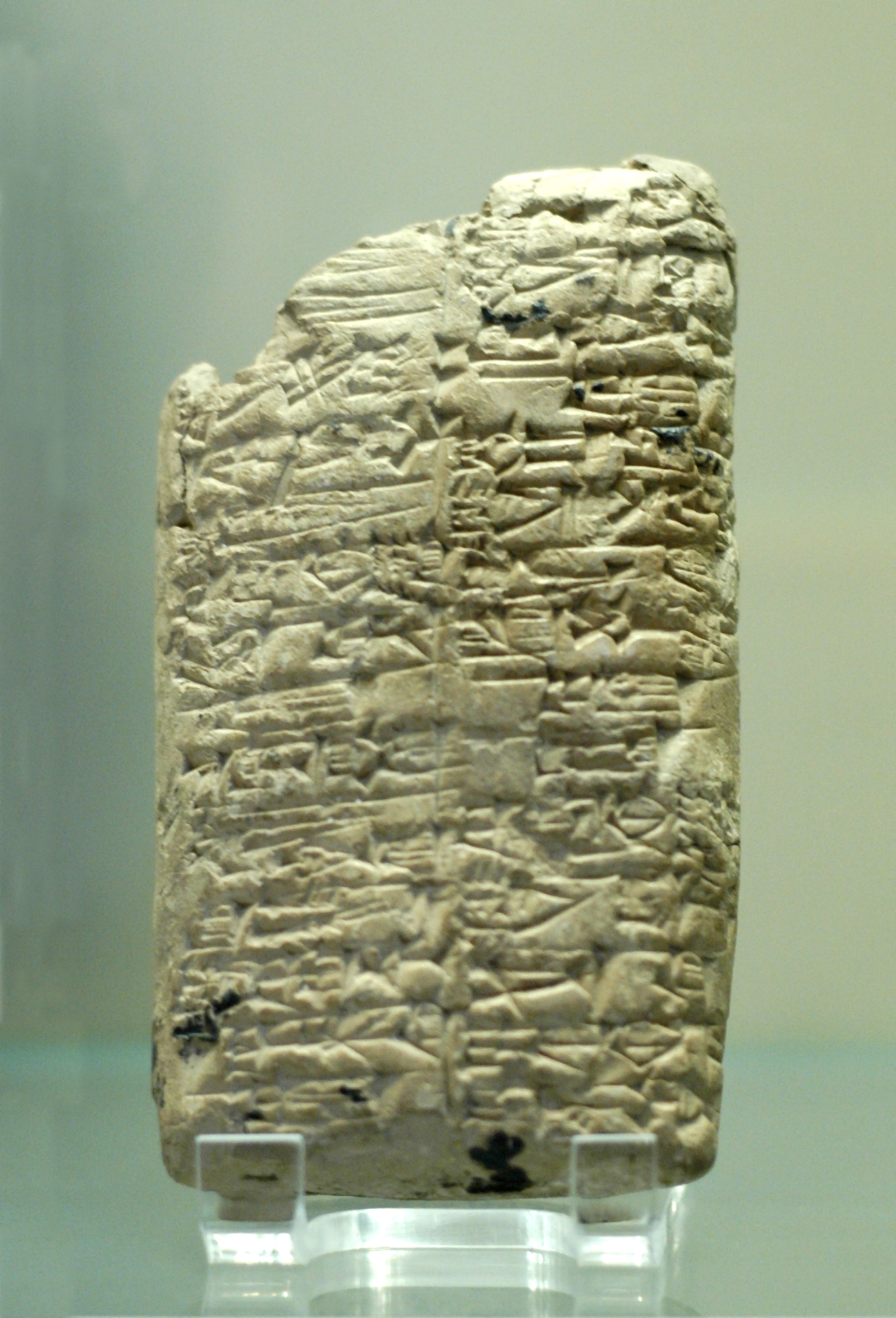|
Böhl Collection
The De Liagre Böhl Collection of Cuneiform Inscriptions or Böhl Collection is a collection of clay tablets and other objects inscribed with cuneiform texts in Leiden, the Netherlands. Description The collection is named after its collector, Frans de Liagre Böhl. It comprises the largest collection of cuneiform tablets in the Netherlands. In addition to 3355 cuneiform objects (including seals), the collection incorporates a small number of objects from the ancient Near East and Egypt. The owner of the collection is The Netherlands Institute for the Near East in Leiden; the cuneiform tablets are available for consultation in the Special Collections Reading Room of Leiden University Libraries. A few objects from the Böhl Collection are on display in the permanent gallery "The Ancient Middle East" of the National Museum of Antiquities, Leiden. File:NINODeLiagreBohlLB1321.jpg, link=Bestand:NINODeLiagreBohlLB1321.jpg, Clay tablet from the library of Ashurbanipal Ashurbanipal ( ... [...More Info...] [...Related Items...] OR: [Wikipedia] [Google] [Baidu] |
Clay Tablet
In the Ancient Near East, clay tablets (Akkadian language, Akkadian ) were used as a writing medium, especially for writing in cuneiform, throughout the Bronze Age and well into the Iron Age. Cuneiform characters were imprinted on a wet clay tablet with a stylus often made of Reed (plant), reed (reed pen). Once written upon, many tablets were dried in the sun or air, remaining fragile. Later, these unfired clay tablets could be soaked in water and recycled into new clean tablets. Other tablets, once written, were either deliberately fired in hot kilns, or inadvertently fired when buildings were burnt down by accident or during conflict, making them hard and durable. Collections of these clay documents made up the first archives. They were at the root of the first library, libraries. Tens of thousands of written tablets, including many fragments, have been found in the Middle East. Most of the documents on tablets that survive from the Minoan civilization, Minoan and Mycenaean ... [...More Info...] [...Related Items...] OR: [Wikipedia] [Google] [Baidu] |
Cuneiform
Cuneiform is a Logogram, logo-Syllabary, syllabic writing system that was used to write several languages of the Ancient Near East. The script was in active use from the early Bronze Age until the beginning of the Common Era. Cuneiform scripts are marked by and named for the characteristic wedge-shaped impressions (Latin: ) which form their Grapheme, signs. Cuneiform is the History of writing#Inventions of writing, earliest known writing system and was originally developed to write the Sumerian language of southern Mesopotamia (modern Iraq). Over the course of its history, cuneiform was adapted to write a number of languages in addition to Sumerian. Akkadian language, Akkadian texts are attested from the 24th century BC onward and make up the bulk of the cuneiform record. Akkadian cuneiform was itself adapted to write the Hittite language in the early second millennium BC. The other languages with significant cuneiform Text corpus, corpora are Eblaite language, Eblaite, Elamit ... [...More Info...] [...Related Items...] OR: [Wikipedia] [Google] [Baidu] |
Leiden
Leiden ( ; ; in English language, English and Archaism, archaic Dutch language, Dutch also Leyden) is a List of cities in the Netherlands by province, city and List of municipalities of the Netherlands, municipality in the Provinces of the Netherlands, province of South Holland, Netherlands. The municipality of Leiden has a population of 127,046 (31 January 2023), but the city forms one densely connected agglomeration with its suburbs Oegstgeest, Leiderdorp, Voorschoten and Zoeterwoude with 215,602 inhabitants. The Statistics Netherlands, Netherlands Central Bureau of Statistics (CBS) further includes Katwijk in the agglomeration which makes the total population of the Leiden urban agglomeration 282,207 and in the larger Leiden urban area also Teylingen, Noordwijk, and Noordwijkerhout are included with in total 365,913 inhabitants. Leiden is located on the Oude Rijn (Utrecht and South Holland), Oude Rijn, at a distance of some from The Hague to its south and some from Amsterdam ... [...More Info...] [...Related Items...] OR: [Wikipedia] [Google] [Baidu] |
Frans De Liagre Böhl
Franz "Frans" Marius Theodor de Liagre Böhl (Vienna, Austria, 16 August 1882 – Milsbeek or Nijmegen, the Netherlands, 16 November 1976) was a Dutch professor of Assyriology and Hebrew language, Hebrew. Milsbeek is mentioned as his place of death. Nijmegen is mentioned as his place of death. Nijmegen is mentioned as his place of death. Nijmegen is mentioned as his place of death. His father was Eduard Böhl (1836-1903), a well-known Protestantism, Protestant clergyman and later a professor of Biblical Studies, Old Testament studies at the University of Vienna, who had married the daughter Anna of the influential Dutch Protestant theologian Hermann Friedrich Kohlbrugge (1803-1875). His second marriage was with Baroness Jacoba Frederica "Jacqueline" van Verschuer (1846-1921), who became Franz's mother. In 1949 Franz Böhl added ''de Liagre'' to his surname Böhl, to prevent his grandmother's birth name from becoming extinct. He married Elisabeth Henriëtte Fabius (1886-1921) ... [...More Info...] [...Related Items...] OR: [Wikipedia] [Google] [Baidu] |



